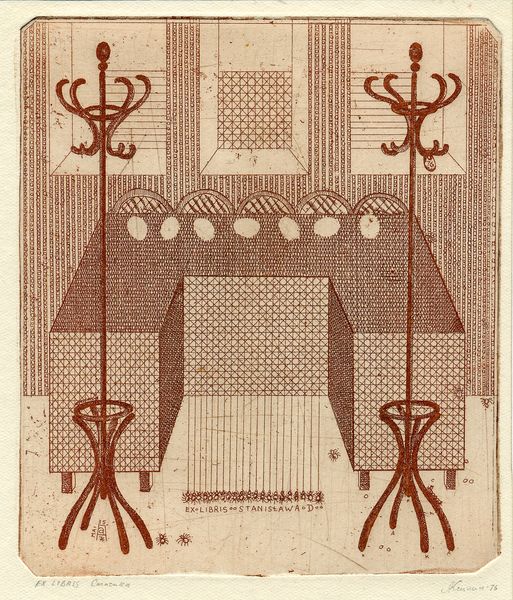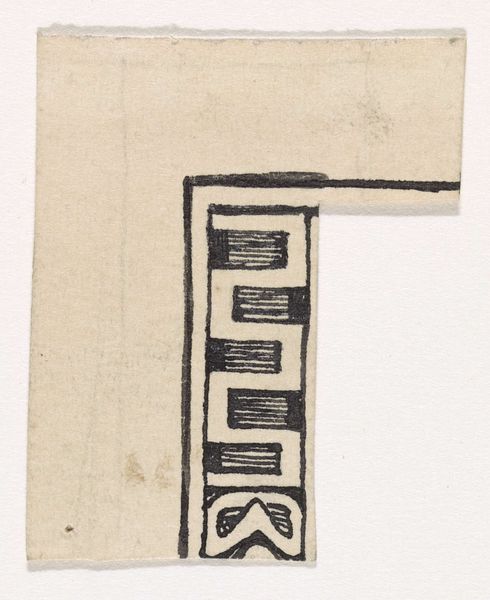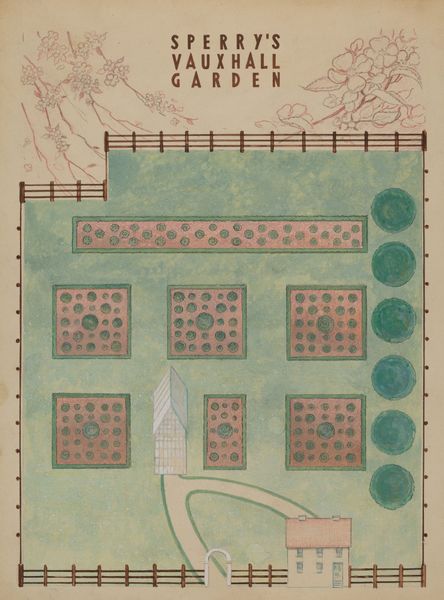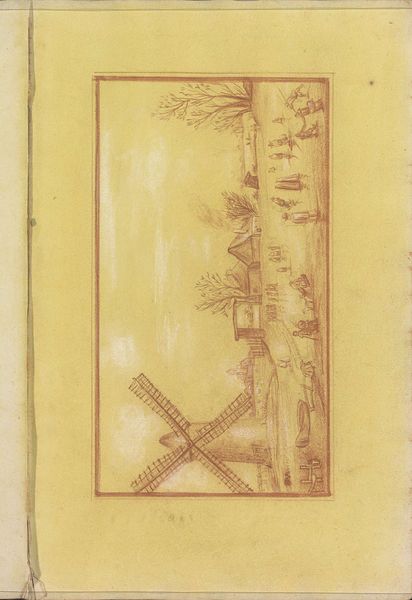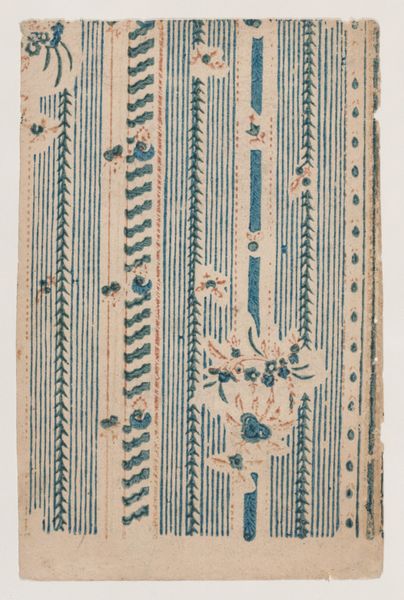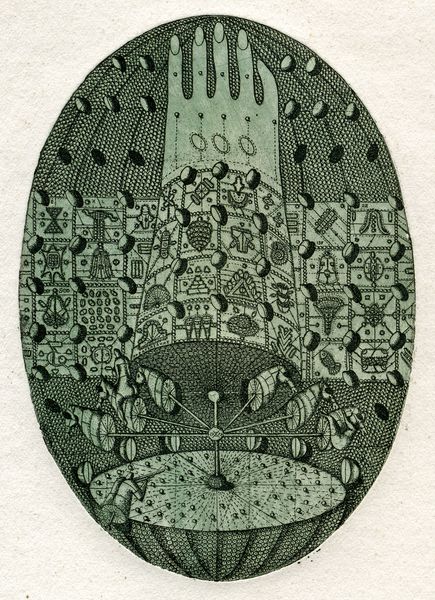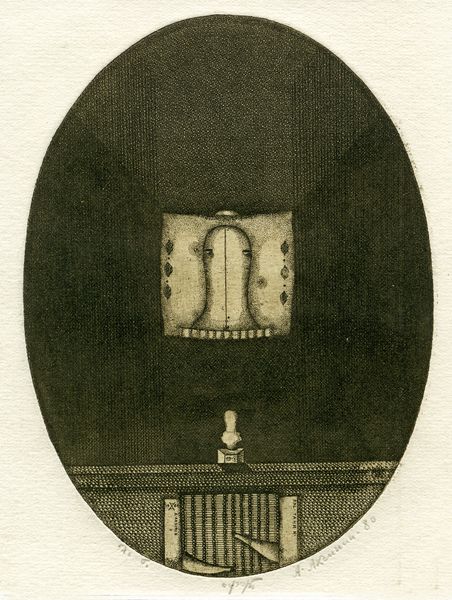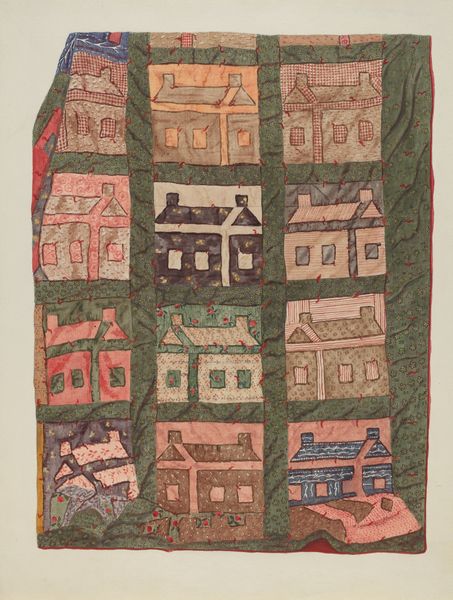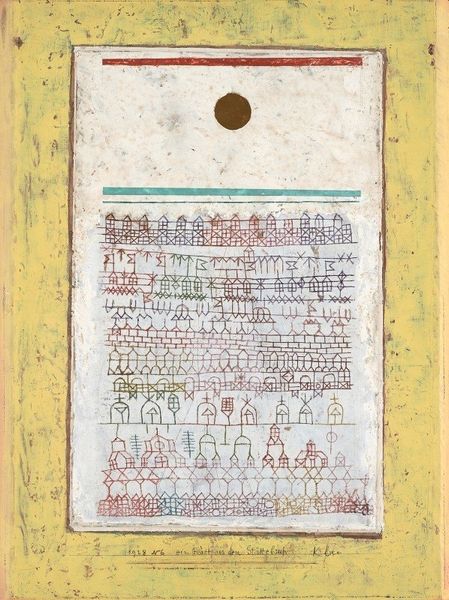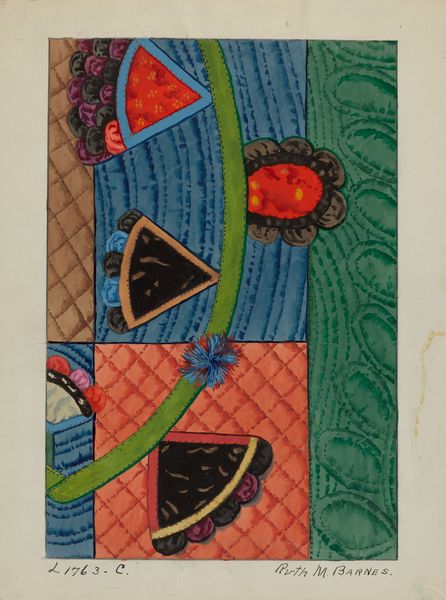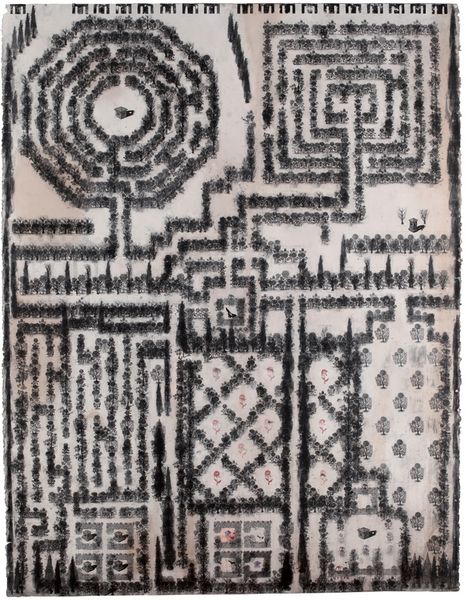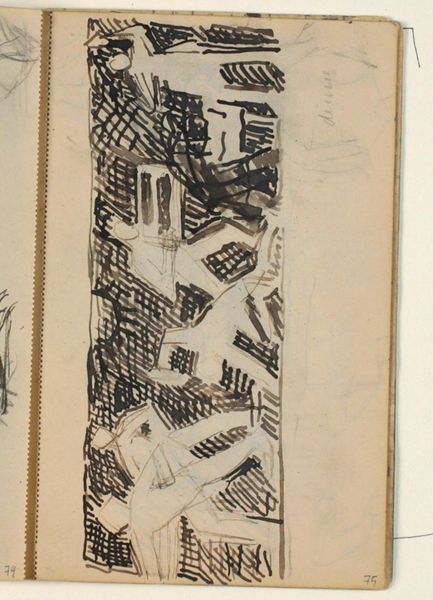
#
architectural sketch
#
treasure map
#
aged paper
#
toned paper
#
blue ink drawing
#
old engraving style
#
etching
#
personal sketchbook
#
golden font
#
warm toned green
Copyright: Oleksandr Aksinin,Fair Use
Curator: This is Oleksandr Aksinin's "Exlibris of V.Cherkasova," created in 1976. It's an etching, possessing the intricate detail characteristic of that medium. Editor: My first impression is that it's charmingly surreal, almost like a whimsical map of the subconscious. The warm tones and meticulous lines give it an antique quality. Curator: Precisely. Note how Aksinin employs cross-hatching and varied line weights to create depth and texture. The composition is strikingly organized. Observe the architectural elements juxtaposed with more dreamlike features like the clouds. Editor: And consider what Aksinin, a Ukrainian artist working in the Soviet era, might be expressing through this "Exlibris"— a bookplate marking ownership, typically a sign of bourgeois intellectualism. The dreamlike quality could represent a quiet subversion of dominant ideologies. The windmill, for instance, could symbolize freedom of thought, grinding against the uniformity imposed by the state. Curator: That’s an intriguing perspective. One could also read the architectural motifs—the carefully constructed buildings and the ordered rows of what appear to be trees or bushes—as a reflection of the structured world the artist inhabited. Editor: But the ex libris itself, it’s for a woman—V. Cherkasova— suggesting a potential homage to female intellectual labor at a time when women’s contributions were often downplayed in official narratives. The architectural space becomes a haven for her thoughts. Curator: I agree. Furthermore, there's a fascinating tension between the precision of the etching technique and the fantastical imagery. It resists a singular reading, opening itself to interpretations both personal and societal. Editor: Absolutely. This "Exlibris" is far more than just a mark of ownership; it's a potent symbol of individual identity, resistance, and the enduring power of imagination within restrictive systems. Curator: Indeed, seeing it with your contextual understanding enriches one’s appreciation. Editor: And your formal reading helps focus on its structure of power.
Comments
No comments
Be the first to comment and join the conversation on the ultimate creative platform.
